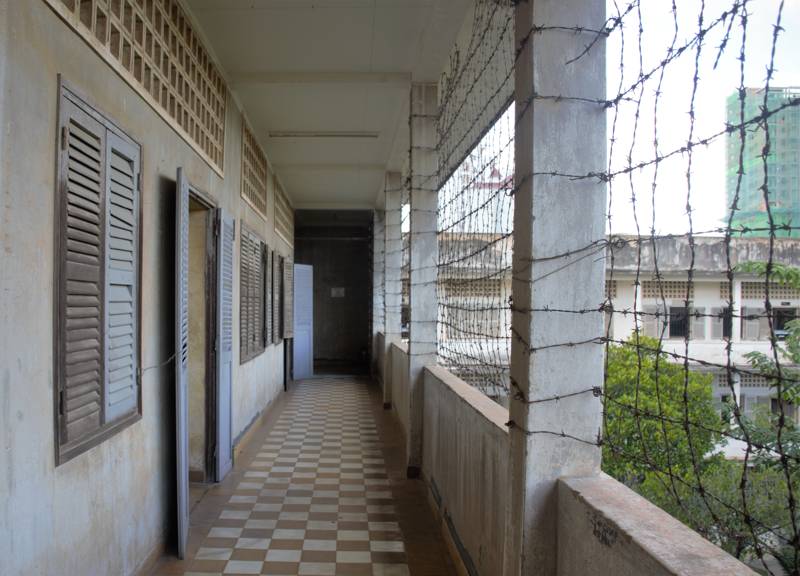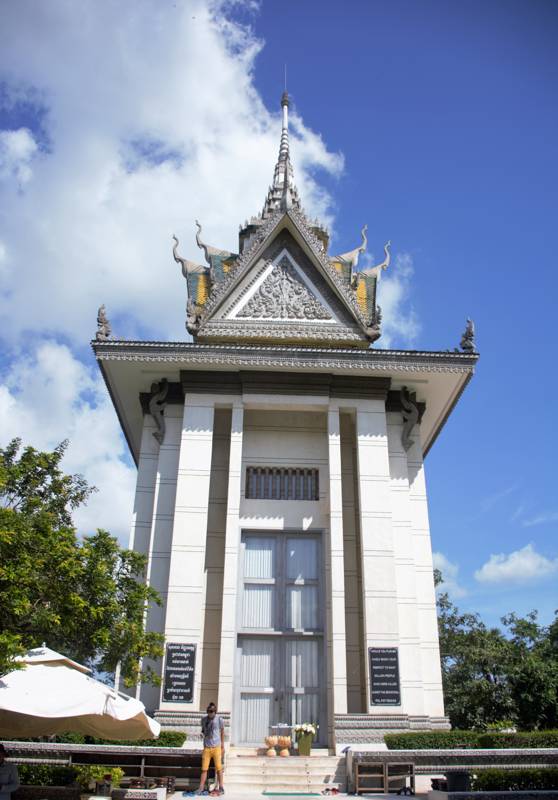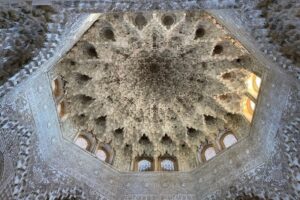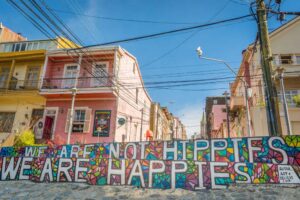Everyone who is familiar with the name Pol Pot, is also aware that Cambodia has a dark history. The Khmer Rouge, that dictated the country in the seventies, was responsible for the Cambodian genocide, where up to 2 million Cambodians (a quarter of the country’s then population) were killed. In Phnom Penh, the capital of Cambodia, two museums display the cruelties of the Khmer Rouge regime and are therefore two historical reasons to visit Phnom Penh. Only by visiting the killing fields of Choeung Ek and the Tuol Sleng museum, you will be able to fully understand Cambodia.
Table of Contents
Tuol sleng museum – S21
During the Khmer Rouge regime, this former school became one of the largest detention houses where innocent prisoners were tortured and killed for information. This prison is now a museum, exhibiting the horror that happened here during the Khmer Rouge. The museum houses thousands of photographs of the victims, making the visit an emotional experience. During the museum tour, some of the victims their story is told, so it feels like you get to know the victims personally. A very touching experience.
Block A left a deep impression on us. During the liberation of Phnom Penh, 14 prisoners where here tortured to death and were left behind. There is still a horrifying vibe in these rooms as the torture material is displayed and the walls have photographs of the bodies as they were found by the Vietnamese troops.
How to get there?
The Tuol Sleng museum is located on the outskirts of Phnom Penh (Corner of Street 113 & Street 350; opening hours: 8.00 AM – 5.00 PM, 7 days / week). You can easily reach it with a tuk tuk or your own transport. There are several shops in Phnom Penh that rent scooters, for about $6 / day. Just keep in mind that the traffic in the capital is crazy. It is not the place where you want to learn how to drive a scooter.
How much does it cost?
The entrance fee for this museum is $5 and we strongly advise you to rent an audio-guide as well ($1), as this gives you much background information about this prison. Apparently, some survivors of the prison now give tours in the museum, so this is also an option.

KILLING FIELDS OF CHOEUNG EK
This museum is the place where prisoners from S21 were deported to. It used to be a peaceful orchard, but under the reign of Pol Pot, it became a horror scene. About 17.000 men, women and children were killed here. The evidence is still visible: 129 mass-graves. Probably the most touching part of your walk through the orchard is the big tree, that was used for killing little babies. And because 43 mass graves are still untouched, it happens that bones and pieces of clothing are still emerging to the surface. Again, the visit is a rather depressing experience.
The audio-guide, that is available in many languages, takes you through the orchard while telling you the cruelties that happened here. The tour ends at the memorial monument, where more than 8000 skulls are exhibited, sorted on the basis of gender, age and the way how the person was killed.
How to get there?
This museum is located about 15 kilometers southwest from Phnom Penh at Roluos village. There is no public transport, but you can easily arrange a tuk tuk or rent a scooter to get there by yourself. Also, hotels and guesthouses in Phnom Penh can arrange transport to get there, if this is needed. Opening hours of the museum: 8.00 AM – 5.00 PM, 7 days/ week.
How much does it cost?
The entrance fee for this museum is $6, but it includes an excellent audio-guide. The audio-guide is available in 15 languages (Khmer, English, French, German, Japanese, Dutch, Mandarin, Korean, Spanish, Thai, Italian, Vietnamese, Swedish, Malay, Russian).

THE HISTORY OF CAMBODIA
Do you want to read more about the Khmer Rouge? Below, we give you a short overview of the historical facts.
The Khmer what? A brief history of the Khmer Rouge?
In 1953, after years of colonization by the French and Japanese, Cambodia became an independent country under the reign of King Sihanouk. In this post-independence period, Cambodia was in peace and there was great welfare. However, during the Vietnam war (1955-1975), the country struggled to keep its neutrality, as many areas bordering Vietnam were bombed by US forces that were fighting against North-Vietnam. In 1965, Sihanouk was convinced that the US was plotting against him and he took sides with the allies of North-Vietnam and China. Although most of the civilians considered Sihanouk as a semi divine ruler, a conflict arose between his army and leftist rebels in 1969. As a result of this conflict, Sihanouk fled to Beijing in 1970, where he set up a government-in-exile. His allies were a revolutionary movement that was called the Khmer Rouge, and that was recruiting quickly. At the same time, a new government in Cambodia was established and Lon Nol became the new leader.
In April 1970, the US was bombing Cambodia again, hoping to flush out the many Viet Cong and North-Vietnamese soldiers who settled there during the reign of Sihanouk. However, the bombing resulted in the Vietnamese communists to withdraw even deeper in Cambodia, destabilizing the new government of Lon Nol. Just a couple of months later, the Vietnamese forces and the Khmer Rouge were in the lead. Between 1970 and 1975, thousands of people died in the fight between the new government and the Khmer Rouge. On April 17th 1975, the capital Phnom Penh surrendered to the Khmer Rouge.
The main goal of the Khmer Rouge was to transform Cambodia into a peasant-dominated agrarian cooperative. All civilians in town were obliged to head to the countryside and work for 12-15 hours a day. Members of the old government were executed within days and the leader of the Khmer Rouge, Pol Pot wanted to purify the Cambodian population by killing many innocents. It is still not known how many Cambodians have died (either by execution or by disease) during the Khmer Rouge period. The horrors lasted three years, eight months and 20 days. The figure is probably close to two million people. Almost a quarter of the Cambodian population.
On December 25 1978, the Vietnamese invaded Cambodia, and the Pol Pot government was vanished two weeks later. The Vietnamese installed a new government and Pol Pot was condemned to death for his genocidal acts. It still took several years for Cambodia to have peace, and the country is still recovering from the cruelties that happened here under the Khmer Rouge regime.


